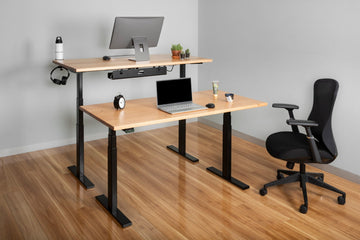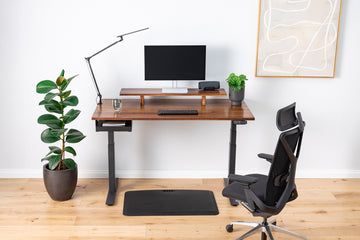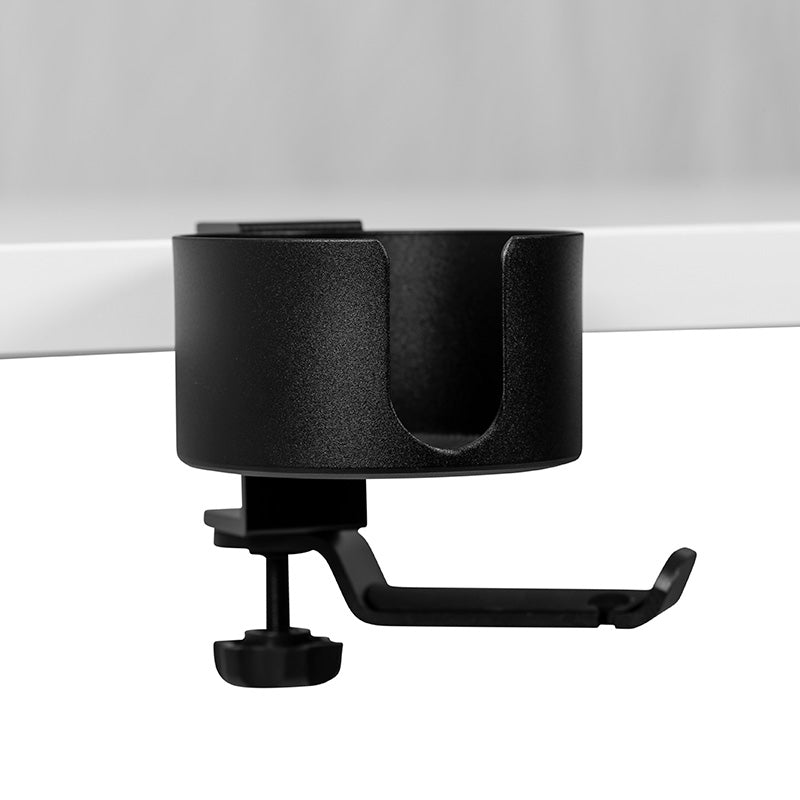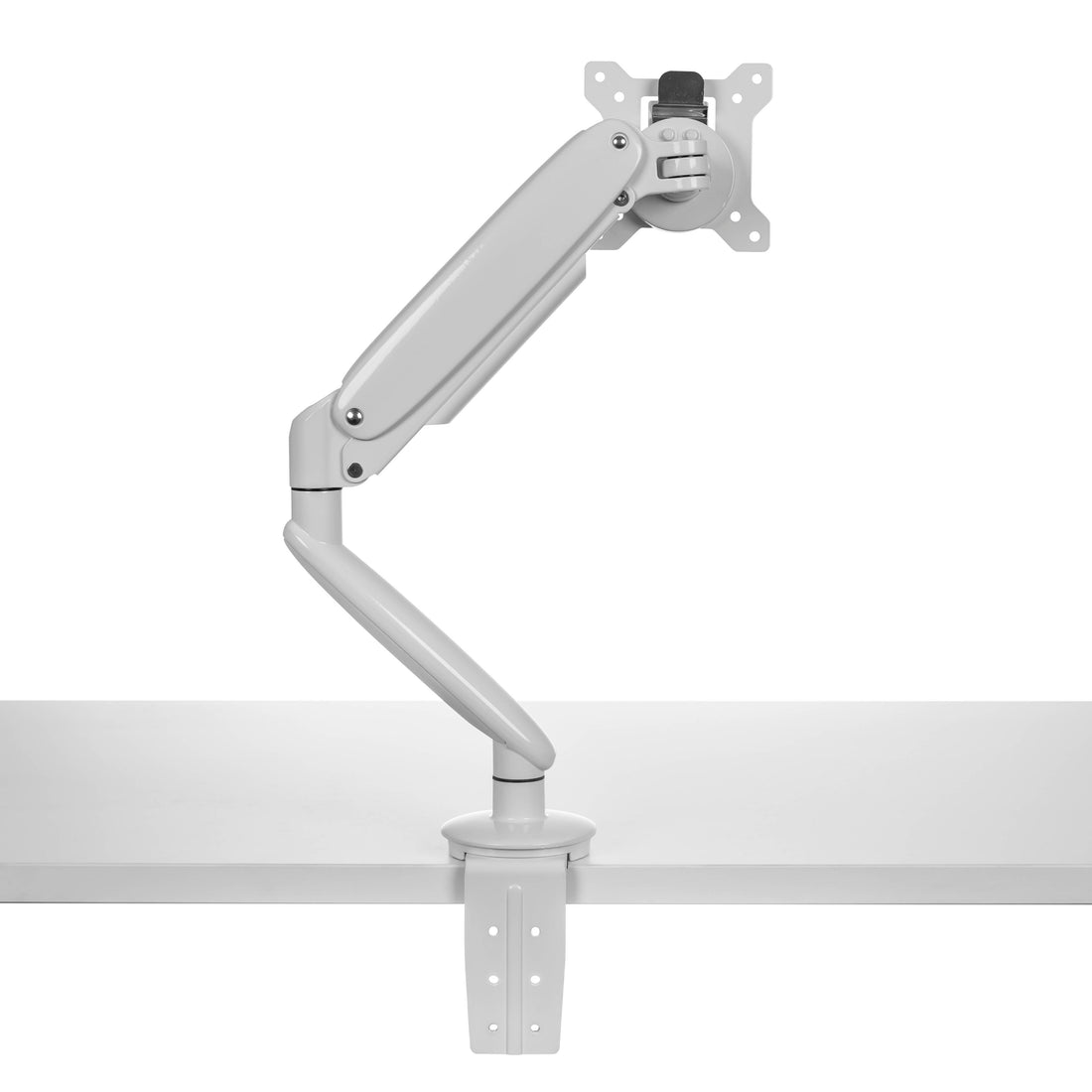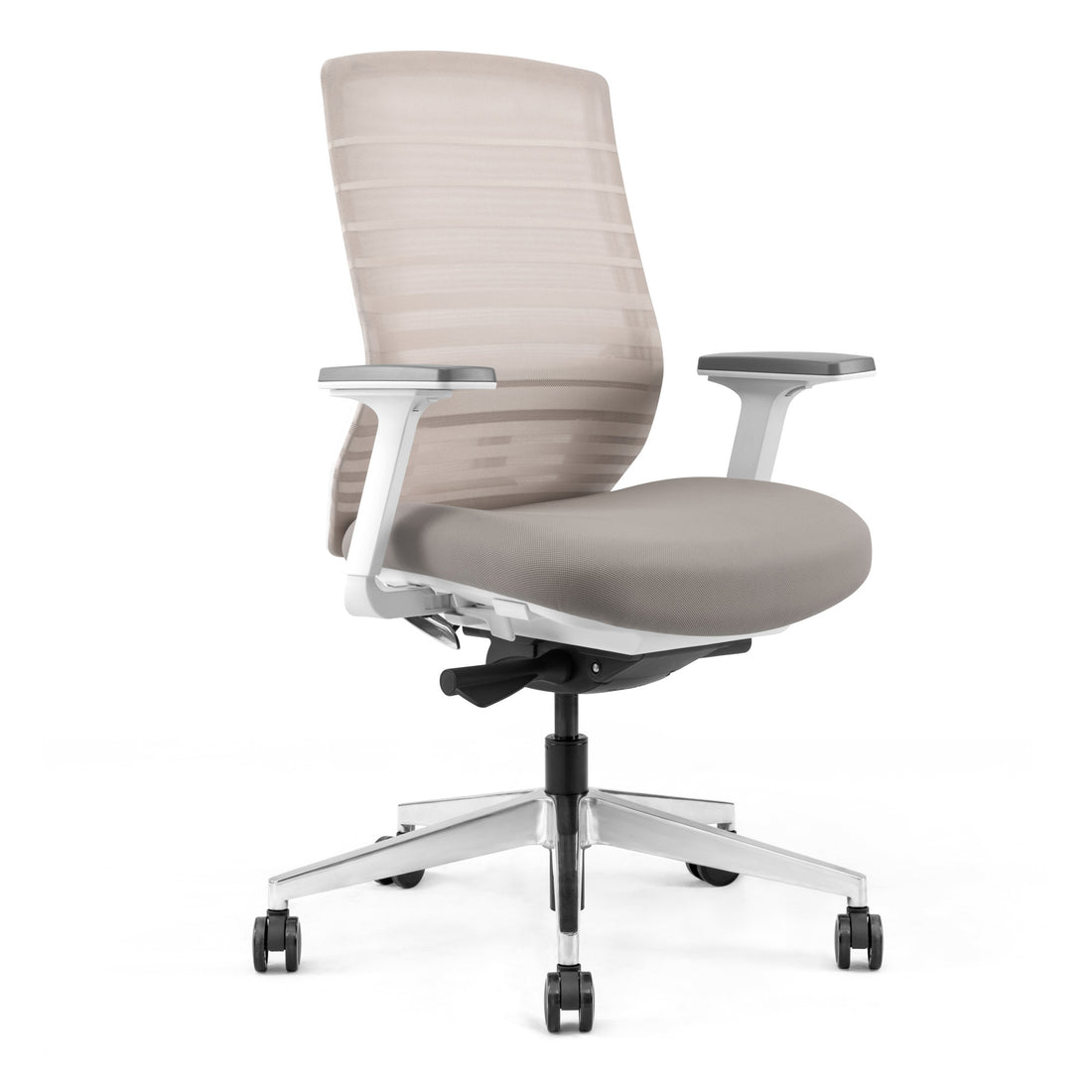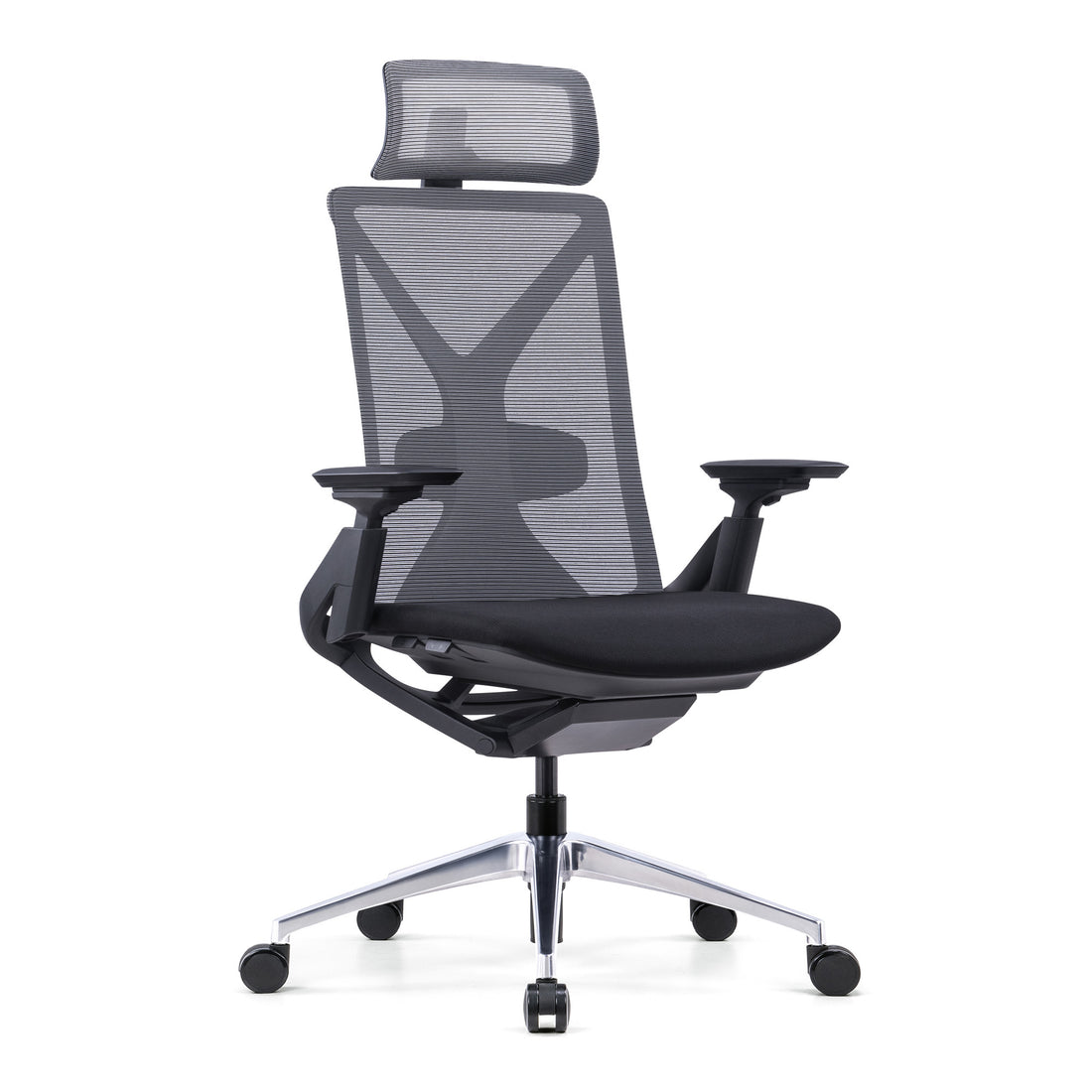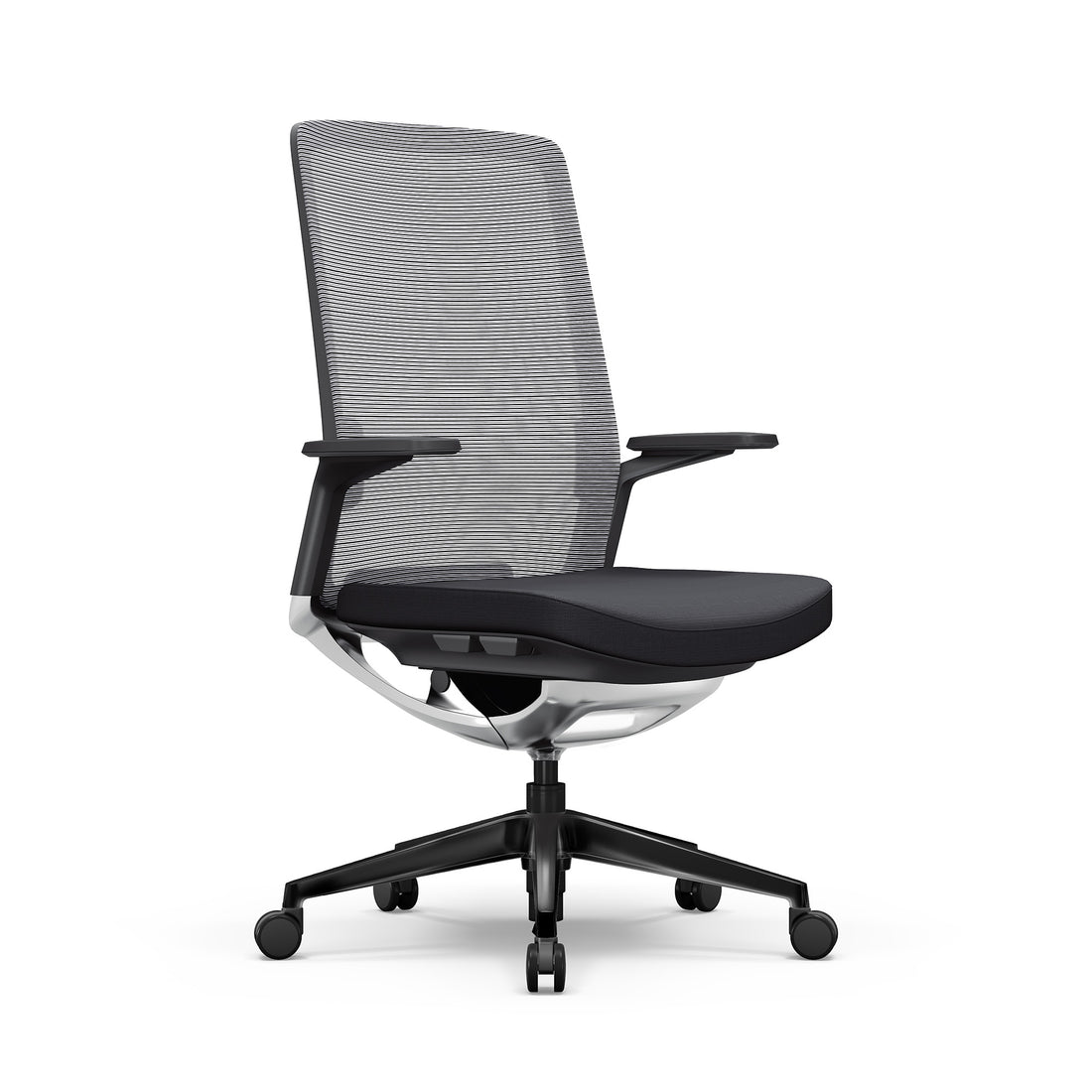Desk depth is one of the most crucial yet often overlooked factors when setting up your workspace, especially when integrating standing desks. Desk depth directly impacts your comfort, productivity, and overall workspace functionality. Whether you’re working from home, setting up an office, or simply looking to optimize your current desk, choosing the proper depth can make all the difference.
In this guide, we’ll explore everything you need to know about desk depth, from understanding its importance in ergonomics to evaluating different depth options. By the end of this article, you’ll be equipped with the knowledge to select the best desk depth tailored to your needs, ensuring your workspace is comfortable and efficient.
What is Desk Depth and Why is it Important?
Importance of Desk Depth in Ergonomics
Desk depth, which refers to the distance from the front edge to the back edge of a desk, is a key factor in creating a comfortable and efficient workspace. The proper desk depth can significantly impact your posture, determining how far you must reach for your tools and devices. If the desk depth is too shallow, you might find yourself cramped, with insufficient space for your equipment. On the other hand, a desk that’s too deep can cause you to stretch uncomfortably, leading to strain on your back and shoulders.
Properly chosen desk depth ensures that your monitor, keyboard, and other essential items, including those in popular desk setups with laptop and monitor, are within easy reach. This is crucial for maintaining good posture and avoiding strain. An ergonomic desk depth balances space and accessibility to enhance your comfort throughout the workday.
How Desk Depth Affects Your Workspace
The depth of your desk influences how you organize your workspace and how efficiently you can work. Besides desk height, desk depth is crucial in creating a comfortable and ergonomic setup. A standard desk depth usually offers enough room for a monitor, keyboard, and some documents, making it a versatile choice for most tasks. However, if your desk is too deep, it might dominate your space, making your office feel cramped. Conversely, a shallow desk might need to provide more room, leading to clutter and disorganization.
A well-chosen desk depth helps you maintain an organized workspace where everything is within reach. It reduces the time spent searching for items and improves your overall workflow. Whether working in a compact home office or a spacious corporate environment, the proper desk depth is essential for maximizing your space and productivity.
Desk Depth Measurements and Applications
Benefits and Drawbacks of 45cm Depth
A 45cm (17.7 inches) desk depth is one of the more compact options available. It’s perfect for small spaces or minimalist setups where every centimeter counts. This depth allows for basic tasks, such as writing or using a laptop, without taking up too much room. However, it might not be sufficient for those who need to use multiple devices or prefer to spread out their work materials.
Pros and Cons of 50cm Depth
A 50cm (19.7 inches) desk depth provides slightly more room while still being compact enough for smaller spaces. This depth is ideal for basic setups, comfortably accommodating a monitor and keyboard. However, like the 45cm depth, it might need more space for more complex setups or additional equipment.
Advantages and Disadvantages of 60cm Depth
A 60cm (23.6 inches) desk depth is closer to the standard desk depth, offering ample space for most users. This depth is versatile, accommodating a range of activities from computer work to paperwork. It’s a popular choice for those who need a balanced workspace that doesn’t feel too cramped or too large.
Evaluating 70cm Depth for Different Uses
The 70cm (27.6 inches) desk depth provides more space for larger monitors or multiple devices. This depth is particularly useful for professionals who require a more extensive workspace, such as designers or video editors. While it offers plenty of room, it also requires a larger office space to avoid making the room feel crowded.
Why 75cm Depth Might Be Ideal
A 75cm (29.5 inches) desk depth is ideal for those who need a versatile and spacious workspace. It offers ample room for large monitors, multiple devices, and various work tools, making it perfect for multitasking. This depth also provides sufficient space for organizing documents, keeping everything within easy reach without crowding the desk. Additionally, the 75cm depth supports a wide range of ergonomic setups, allowing you to position your monitors, keyboard, and accessories at the optimal distance for comfort and efficiency.
Uses and Benefits of 80cm Depth
An 80cm (31.5 inches) desk depth is suitable for users who require a more extensive workspace. This depth offers plenty of space for various tasks but requires sufficient room in the office.
When to Choose 90cm Depth
A 90cm (35.4 inches) desk depth is generally recommended for specialized setups, like drafting tables or workspaces with large equipment. This depth is exceptional for tasks that require ample surface area but may be too deep for standard office work.

Custom Desk Sizes: Exploring Tailored Solutions
If you’re struggling to find the perfect desk depth that meets your specific needs, consider reaching out to UpDown Desk for custom sizing options. This option is especially beneficial if you have particular ergonomic needs or space constraints that standard sizes can't accommodate. Don’t settle for a standard desk that doesn’t fit—contact us to discuss how we can help you design the ideal workspace.
Desk Depths: Comparison Table
Selecting the appropriate desk depth is key to creating a workspace that suits your needs, whether you're in a compact area or require an extensive setup. The table below compares various desk depths, helping you understand which size might be the best fit for your work environment.

Comparing Desk Depth Options
Choosing the proper desk depth is crucial for creating an efficient and comfortable workspace. Each depth offers unique benefits and considerations, from the compact design of minimum desk depths to the versatility of standard depths and the tailored fit of ergonomic setups. It is also important to look at specific use cases for different desk depths, ensuring you find the perfect match for your work style and space.
Minimum Desk Depth: Pros and Cons
The minimum desk depth is 45cm to 50cm (17.7 to 19.7 inches). These depths are space-saving but require more surface area for all tasks. While they are ideal for small rooms or minimal setups, they may not be suitable for users who need more space for multiple devices or larger work materials.
Standard Desk Depth: What You Need to Know
A standard desk depth of around 60cm (23.6 inches) is typically sufficient for most users. This depth balances space efficiency with enough room for a computer and basic office supplies. It is versatile, making it a popular choice for home offices and corporate environments.
Best Desk Depth: Finding the Right Fit
The best desk depth depends on your specific needs. For most people, a depth between 60cm and 75cm (23.6 to 29.5 inches) strikes the right balance, offering enough space without being overly large. Consider your workspace, tasks, and ergonomic needs when choosing the best depth for your desk.
Ergonomic Desk Depth: Features and Benefits
Ergonomic desk depth is designed to maximize comfort while minimizing strain and countering the effects of bad desk ergonomics. This typically involves depths that allow proper monitor distance and space to work comfortably without overstretching. An ergonomic desk depth ensures your monitor is positioned at eye level, reducing eye strain and promoting a healthy posture.
Specific Use Cases for Different Desk Depths
Different professions and activities benefit from varying desk depths. For example, creative professionals prefer a deeper desk (75cm/29.5 inches or more) for multiple monitors and tools, while a standard office worker might find 60cm sufficient.
Standard Desk Depth vs. Ideal Desk Depth
When choosing between standard desk depth and ideal desk depth, it’s essential to consider your specific needs and activities. While standard depth (60cm/23.6 inches) is versatile and widely used, your ideal depth might be slightly larger or smaller depending on your workspace and work type. For example, someone working in a small office might prioritize a shallower desk to maximize space. At the same time, a designer or gamer might need more depth to accommodate multiple monitors and equipment.
Desk Depth for Different Activities
Desk Depth for Computer Work
The proper desk depth is essential to maintaining a comfortable, ergonomic computer setup. It ensures that your monitor, keyboard, and mouse are positioned at optimal distances to prevent strain.
Optimal Depth for Comfortable Computer Use
A computer desk depth of 60 to 75cm (23.6 to 29.5 inches) is usually optimal for computer work. This range provides enough room for a monitor, keyboard, and mouse, with additional space for other items.
Impact on Posture and Productivity
Proper desk depth can significantly affect your posture. If your desk is too shallow, you might find yourself hunching over, leading to back and neck strain. On the other hand, a deeper desk allows you to position your monitor at the correct distance, reducing eye strain and improving productivity.

Desk Depth for Writing and Reading
Adequate desk depth for writing and reading tasks allows for a spacious and organized workspace.
Recommended Depth for Paperwork
A desk depth of 60cm to 70cm (23.6 to 27.6 inches) is typically sufficient for tasks like writing and reading. This depth provides enough space for documents and books without being overly deep.
How Depth Influences Comfort and Efficiency
The proper desk depth for writing and reading lets you spread your materials comfortably, improving your comfort and efficiency. A too shallow depth might force you to stack items, making it harder to find what you need.
Desk Depth for Multi-Tasking and Creative Work
Creative professionals and multitaskers benefit from deeper desks that provide ample space for multiple tools and devices. This additional depth facilitates a more organized workspace where everything you need is within easy reach, enhancing productivity and comfort. When combined with understanding how long you should stand at a standing desk, these deeper desks can also support better ergonomics by allowing you to alternate between sitting and standing positions. This combination ensures that your workspace accommodates your creative needs and promotes a healthy and balanced work routine.
Benefits of Larger Depths for Multiple Monitors and Tools
Deeper desks (75cm to 90cm or 29.5 to 35.4 inches) are often preferred for multitasking and creative work. These depths provide ample space for multiple monitors, drawing tablets, and other tools essential for professionals like designers, architects, and video editors.
Desk Depth for Different Work Environments
Choosing the proper office desk depth depends on your work environment. Standard desk depths might be more practical for open offices, whereas, in a home office, you might opt for a deeper desk to accommodate additional equipment. In smaller spaces, consider a shallower depth to avoid crowding the room.
How to Choose the Best Desk Depth for Your Needs
Factors to Consider When Choosing Desk Depth
When choosing the proper desk depth, it’s essential to consider how your height, the activities you’ll be performing, and the available space in your office will influence your choice.
User Height and Desk Depth
Your height can significantly influence the best desk depth for you. Taller individuals need a slightly deeper desk to ensure their monitor is at a comfortable viewing distance. In comparison, shorter individuals prefer a shallower depth to keep everything within easy reach. Determining desk depth for a short person is crucial to achieving optimal comfort and ergonomics. For shorter individuals, a desk with a shallower depth can prevent strain caused by overreaching and ensure that the monitor and other tools are positioned at an accessible and comfortable distance.
Desk Usage and Activities
Consider what activities you will perform at your desk. A deeper desk may be necessary if your work involves extensive computer use, but a standard depth suffices for simpler tasks.
Office Space and Desk Depth
Evaluate your office space before deciding on office desk depth. A deep desk might dominate the room in smaller offices, making the space feel cramped, while in larger environments, it can provide the necessary workspace without overwhelming the area.
Tips for Adjusting Your Desk Depth for Ergonomic Comfort
To optimize your ergonomic desk depth, ensure that your monitor is placed at eye level and that you have enough space to position your keyboard and mouse comfortably. Consider using desk accessories like monitor arms or keyboard trays to adjust your workspace according to your needs.
FAQ
What Is Desk Depth?
Desk depth refers to the distance from the front edge to the back edge of a desk. It determines how much surface space is available for work and how far your tools, such as monitors and keyboards, are positioned from you.
What Is the Best Depth of a Desk?
The best desk depth depends on your specific needs. Generally, a depth of 60cm to 75cm (23.6 to 29.5 inches) is ideal for most users, balancing workspace and ergonomics.
Is 75cm Ideal Desk Depth?
Yes, 75cm (29.5 inches) is ideal for ample workspace and comfort, accommodating multiple monitors, a keyboard, and essential tools while maintaining an ergonomic setup. It’s a great choice for those needing a larger work surface in both home and professional settings.
What Is Standard Desk Depth in CM?
The standard desk depth is typically 60cm (23.6 inches), suitable for most office tasks and home setups.
What Is the Standard Desk Depth in Australia?
The standard desk depth in Australia is also around 60cm (23.6 inches), aligning with common ergonomic standards.
Is 60CM Deep Enough for a Desk?
Yes, 60cm (23.6 inches) is deep enough for most desk setups, providing sufficient space for a monitor, keyboard, and other essential work tools.
Is 40 CM Deep Enough for a Desk?
40cm (15.7 inches) is generally too shallow for a desk in an office or home workspace. It might work for minimal uses, such as a small writing desk or a narrow console table, but it doesn’t offer enough depth for ergonomic computer use.
Is 80CM Too Deep for a Desk?
An 80cm (31.5 inches) desk is a little deeper if you need extra space for multiple monitors, creative work, or larger equipment. However, it might be excessive for standard tasks and overwhelm smaller spaces.
What Is Minimal Desk Depth?
The minimal desk depth typically starts at 45cm to 50cm (17.7 to 19.7 inches). This depth suits very compact spaces but may need more room for extensive work setups.

